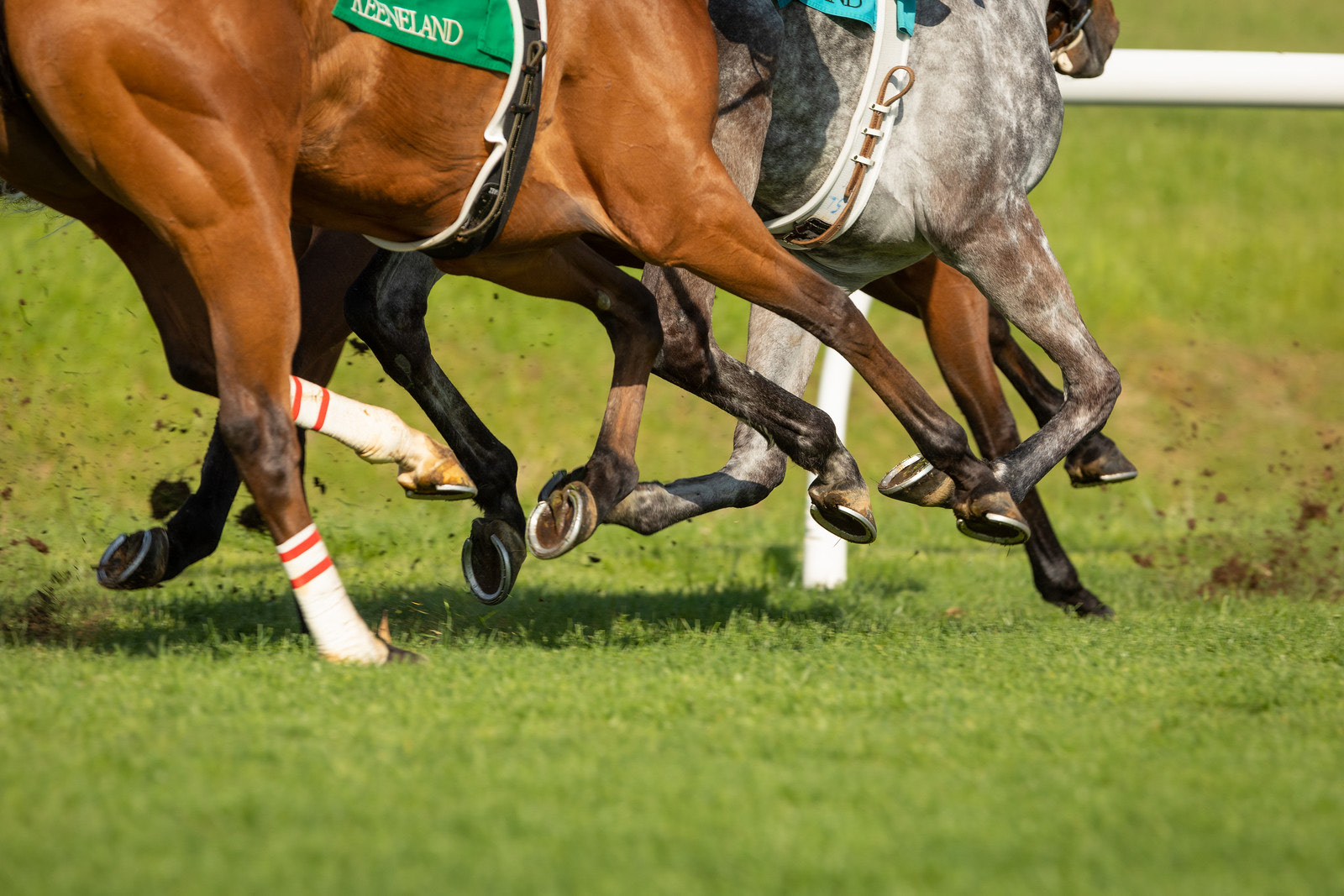Messenger RNA insights could protect Thoroughbred racehorses from injuries
Concerns over animal welfare and the risks of high-speed exercise have long plagued the racing industry. Now, a new study published in the Journal of Equine Veterinary Science reveals more insight into high-speed exercise, and how trainers can help with injury prevention and animal welfare.
The study, titled "Effects of High-Speed Training on Messenger RNA Expression in Two-Year-Old Thoroughbred Racehorses" published in the Journal of Equine Veterinary Science and funded by the Dubai Equine Hospital, aimed to determine if messenger RNA (mRNA) expression could be used to identify those young racehorses at risk for injury and whether there are predictable patterns of mRNA expression changes indicative of successful adaptation to exercise.

PHOTO COURTESY MARC PEARSON PHOTOGRAPHY.
Messenger RNA, which acts as the “instruction manual” for creating specific proteins, has shown previous promise as a biomarker to monitor a horse's capacity to adapt to training and its susceptibility to injuries. The study collected blood samples from 18 two-year-old Thoroughbreds throughout their first season of race training. The blood samples were collected weekly, prior to exercise or administration of medication. The researchers analyzed the expression of 34 mRNA markers in the blood samples using a technique called RT-qPCR.
“The study has revealed vital insights into racehorse health and performance,” said Allen Page, DVM, PhD, scientist and veterinarian with the University of Kentucky Gluck Equine Research Center. “This research was designed to build upon our prior work that hinted at differences in mRNA expression between horses undergoing various training regimens where we saw profound differences we believed could signal an increased risk for injury.”
The initial research that laid the groundwork for this study, “The Impact of Training Regimen on the Inflammatory Response to Exercise in 2-Year-Old Thoroughbreds,” published in the Journal of Equine Veterinary Science, compared two groups of horses undergoing different training methods. While the primary focus was not on injuries, researchers noticed variations in mRNA expression that raised questions about injury risk. These differences suggested that one group of horses might be more prone to injuries than the other, although the study was not designed to directly investigate this aspect.
High-speed training, particularly breezing, is a crucial phase where the risk of injuries increases significantly.
“Injuries in racehorses can encompass a wide range of issues, from minor bone injuries that require brief rest to more severe problems like fractures or soft tissue injuries affecting tendons and ligaments,” Page said. “These injuries can lead to varying degrees of lameness, affecting a horse's racing career and overall well-being.”
The implications of the most recent study are significant for the racing industry. Firstly, the study offers the potential for a valuable biomarker that may predict impending injuries in racehorses. Detecting injuries at an early stage can lead to timely interventions, ultimately improving the well-being and racing careers of these horses, as well as the safety of the jockeys that ride them.
Additionally, trainers may be able to use this information to tailor their training programs for individual horses. By closely monitoring mRNA markers, trainers can gain insights into whether they are pushing a horse too hard or not challenging it enough. Ultimately, this personalized approach to training can optimize a horse's performance and potentially reduce the risk of injuries.
The most striking discovery in this study was the discernible differences in mRNA expression between horses that eventually suffered injuries and those that completed the six-month training period without injury. These mRNA markers indicated that changes were occurring within the horses' bodies in the weeks leading up to an injury.
“We found that injured horses, in the weeks leading up to injury, had differences in some of their messenger RNA markers compared to the non-injured horses,” Page said. “So, hopefully, we have a biomarker there for an impending injury. Obviously, if you can identify injuries before they become significant, you can have a pretty profound effect on those horses because you can intervene.”
The study represents a significant step forward in the racing industry's pursuit of better horse health and performance. While it does not delve into other factors contributing to injuries, it provides a promising avenue for early injury detection and tailored training programs. With the potential to revolutionize how horses are trained and cared for, this research offers hope for a safer and more successful future for Thoroughbred racehorses.
Jordan Strickler is an agriculture communication specialist with UK’s Martin-Gatton College of Agriculture, Food and Environment.
